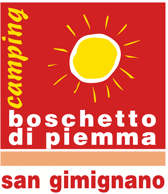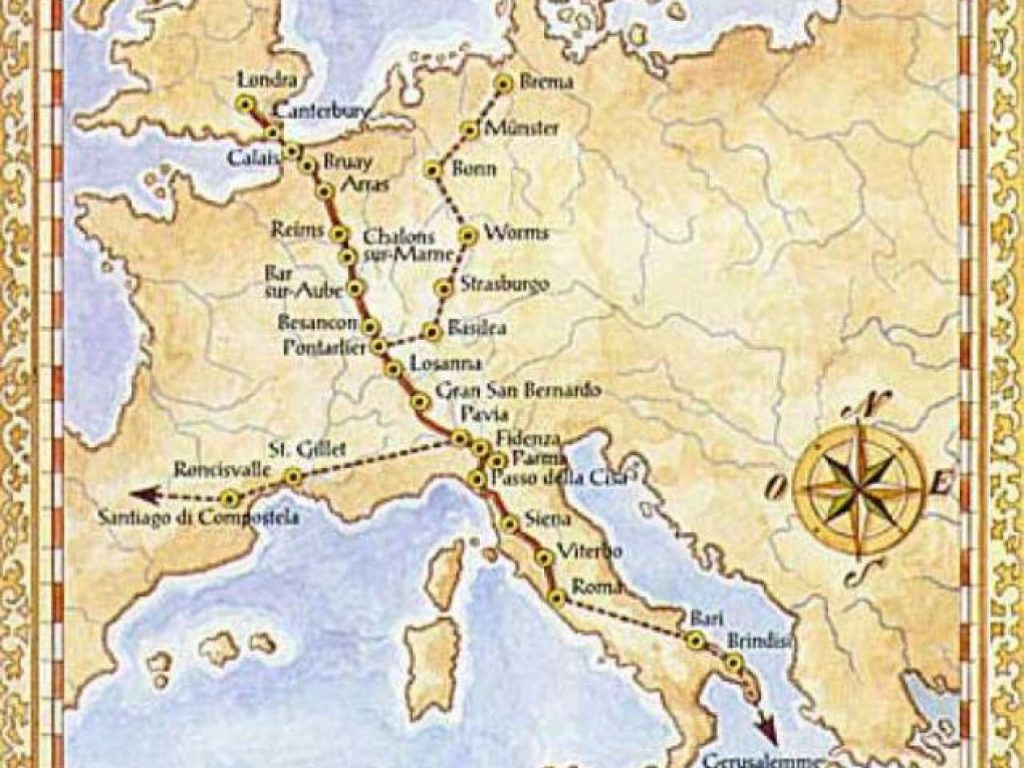The via Francigena is a path travelled in the past by thousands of pilgrims travelling to Rome. The story tells that was Sigeric, Archbishop of Canterbury, visiting Rome to meet Pope John XV, to mark the start of the journey, known as the Via Francigena, resulting was the birth of one of the most important routes of pilgrimage from Canterbury to Rome and constituted one of the most important European traffic routes in medieval times.
It is known as three were the poles of attraction for this humanity journey: Roma, place of martyrdom of Saints Peter and Paul, founders of the Christian Church community; the Holy Land, seat of Golgotha, where they researched the places of the passion of Christ; Santiago di Compostela, extreme tip of Western Europe, where the Apostle St. James had chosen to rest in peace.
And so Europe became a great collector of roads, paths and routes, all converging towards the places of pilgrimage.
The via Francigena is spread over a path of 1600 km from Canterbury. The way crosses the Alps in Valle d’Aosta and descended from Piedmont and Lombardy from the Po Valley, crossing the Apennines towards Berceto, ran through the Tuscan and Lazio to reach Rome.
Still today are traceable on our territories fragments and memories of those routes that founded the history of Europe.
Place of departure: San Gimignano, Piazza del Duomo
Arrival Location: Colle Valdelsa – Gracciano, via Bandiera
Total duration: 5h 30′
Journey distance (Km): 19,16
Difficulty: Media
Classification
Recommended period: spring, summer, autumn
Medium used: Walking
Road signs: arrows and red and white tapes for almost any Specific Strokes
Specifications
Paved path (%): 20
Dirt roads (%): 79
Mule tracks and paths (%): 1
uphill climb (m): 320
denivele (m): 475
maximum quota reached (m): 330
Notes on the trail: Stage rather hard, where we will encounter some Fords that in the wet seasons may reserve some surprise. The interest is essentially landscape, but the Pearl of the day, Badia a Coneo, justifies our labors. Unfortunately you cannot stay overnight at Gracciano, but Colle val d’Elsa can be reached quickly on foot or in a few minutes with the frequent buses.

